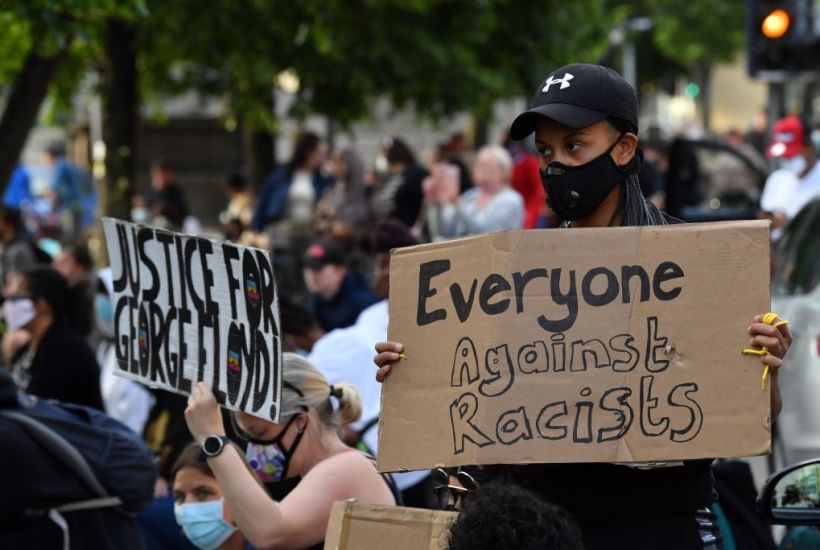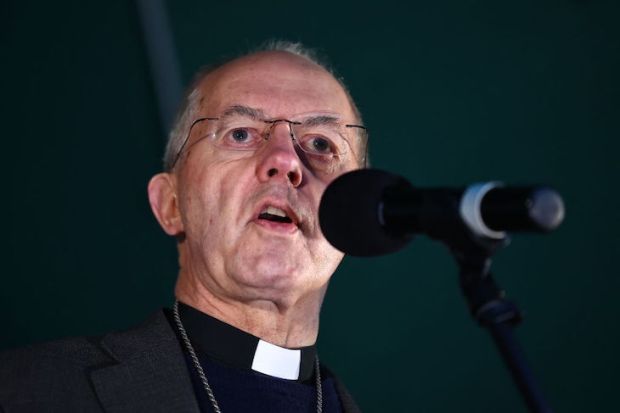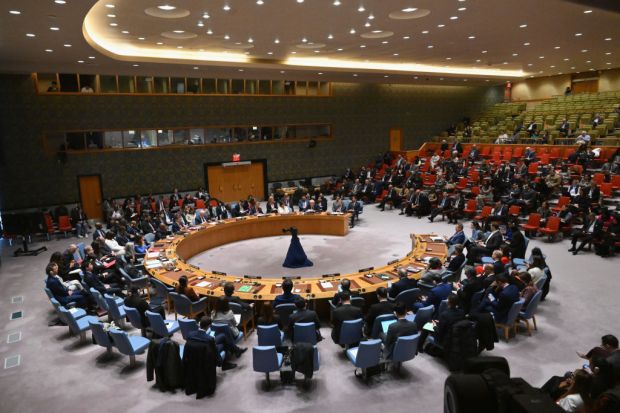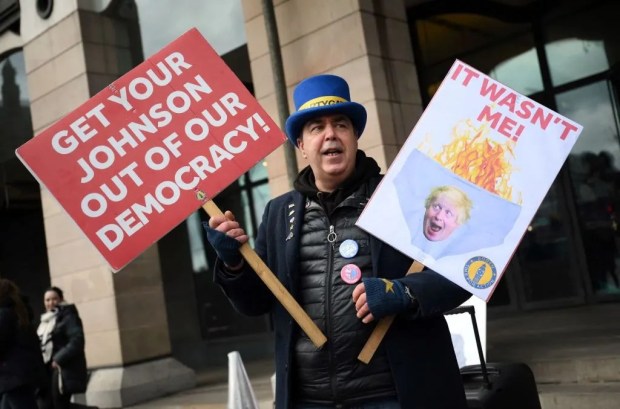Back in the 1960s, my brother, Asim, and I were smitten by the magical Manchester United trio of Law, Best and Charlton. We became London Reds and travelled on the MU Supporters’ Club coach to Old Trafford to watch our team — and we always went to see them play London clubs. But we stopped going in the 1970s; we feared for our physical safety. Marauding bands of skinheads outside the grounds were on the lookout for a spot of Paki-bashing. Instead, during the 1970s, we went on Anti-Nazi League marches and routinely confronted members of the National Front, a fascist party that was briefly the UK’s fourth-largest party in terms of vote share.
Today, Paki-bashing is now largely history, as is the National Front; as are the many egregiously offensive and racist attitudes and behaviour that were our everyday experience back then. The UK is a far better place to live now than it was fifty years ago.
That’s not ‘my’ truth; it’s not ‘your’ truth. It is thetruth.
That simple and, frankly, unexceptional point was made in the race and ethnic disparity report that came out last week. It incurred the wrath of many, predictably amplified on social media, and the resultant clash was gleefully seized upon by many in the mainstream media.
The fury with which this report has been met has not exactly taken me aback. Of course, we knew we would not be loved and that our reflections on institutional racism would kick against an orthodoxy of sorts — and we anticipated that many of the attacks would be ad hominem. There were claims of ‘Boris’s stooges’, ‘toeing the party line’.
But I had rather hoped we would be attacked with something more subtle than an array of blunderbusses. You would be forgiven for thinking we had forgotten to say that racism exists and that more — considerably more — needs to be done to tackle it. Our very first recommendation was to call for greater funding for the Equality and Human Rights Commission (EHRC) to challenge policies or practices that either cause significant and unjust racial disadvantage or arise from racial discrimination. And in that first recommendation we singled out one area where racism is rife: online abuse.
Oh irony! On publication, that’s exactly where the campaign against us found its most offensive expression. The abuse I, and my fellow commissioners, received was astonishing. That old racist canard ‘coconut’ was everywhere; we were called ‘coconut soldiers’ (i.e. brown outside, white inside). That was only the mild stuff. The Commission chairman, Tony Sewell, was a particular target: ‘Tony Sewer’, ‘Tony Sewell is a coon, pass it on’, ‘Sewell Iscariot’. (Bravo for the originality of thought linking Tony Sewell to Goebbels — a higher class of abuse).
The substance of the report — its principal findings, its conclusions, and its recommendations — has barely entered serious public discourse. For the moment, three topics arising from it have come to dominate. Two are substantive issues: the acronym BAME (Black, Asian, and Minority Ethnic) and the concept of institutional racism. The third was simply a misinterpretation of a line about slavery in the foreword.
Overall, there was at least support for the call to abandon the use of the acronym BAME. It lumps every minority group into one category: not White. So far so good. But when you abandon the simplistic white vs BAME narrative, the picture gets complicated.
The data tells different stories about Britain’s minority communities: namely, communities, of the same race or ethnicity, have performed differently in society — some have succeeded and some have done far less well. British Indians earn 16 per cent more, and British Pakistanis 16 per cent less, on average than the White British. Black Caribbean children have exclusion rates higher than White British children while Black African children exclusion rates are no higher than White British children.
In some quarters, these revelations were seen as trying to pit Black groups against Black groups. But its real problem was that it challenged the idea of a miasmic institutional racism. If institutional racism is immanent in our culture and our institutions, how can people of the same race have such different fortunes?
But these intriguing findings were lost in the melee. Immediately, it was determined that the Commission had said institutional racism did not exist. And the critics piled in en masse. From the relatively mild ‘missed opportunity’ to feelings of being ‘deeply and massively let down’ to accusations of a ‘whitewash’, graduating to the idea that the report followed ‘a script that has been written by 10 Downing Street.’ And just to be on trend: the report was accused of ‘gaslighting’ Black, Asian, minority and ethnic people and communities.
Did these people bother to read the report and find out what it said about institutional racism? Readers, use the ‘Find’ function on the report and search ‘institutional racism’. There are 13 mentions. We re-asserted the validity Sir William Macpherson’s definition articulated in his seminal report 21 years ago and said: ‘we believe [it] has stood the test of time’.
But the Commission felt that today the term is used too often and too readily: ‘Where ‘institutional racism’ is used too casually as an explanatory tool, it can also lead to insufficient consideration of other factors which are also known to drive such differences in outcomes’. To help clarify and focus its legitimate use, the Commission put forward a working definition of institutional racism: ‘Institutional racism: applicable to an institution that is racist or has discriminatory processes, policies, attitudes or behaviours in a single institution.’
Why bother with all this if we thought institutional racism does not exist?
Not all responses were negative. We have all received many private messages of support. Publicly, some souls have put their heads above the parapet, including the Chair of the EHRC who welcomed it; Duwayne Brooks (the friend of Stephen Lawrence who witnessed the fatal attack) was supportive, and several MPs came out in its defence. While Matthew Parris, in his usual elegant way, nailed what many disinterested people probably think.
There is, I think, a reason for the race lobby to come piling into this report. Their single-minded focus on race has long been highly influential, and brought about significant positive change. But the report’s suggestion that there are now multiple causes to evident disparities has been received as a slap in the face. Not at all. The fact that the solutions and remedies may not now always lie in the world of race relations, but can also be found in class, poverty, family circumstance and geography, is, in fact, vivid testament to the race lobby’s successes. Nevertheless, one can see why the report’s conclusions have been difficult for the race lobby to stomach.
But this understandable impulse does not apply to the media. With some notable exceptions, their response to this story has been a huge disservice to their audiences. The defenestration of impartiality was little short of shameful. Many of my fellow commissioners were treated abysmally, forced into rows with antagonists. The BBC tried it on with me, too.
In an interview on BBC News, the presenter, Victoria Derbyshire, interrupted to say that the next contributor was early on the line, so would I debate with him/her? I said ‘no’, on the grounds that this was not what we had agreed. I had had no desire to get into a slanging match with anyone. Derbyshire persisted claiming that all of her ‘journalistic instincts’ told her this was the way to go. I suggested — live on air — that once the interview had concluded she should reflect on her journalistic instincts and question her own ethics. To her credit, Derbyshire apologised and, later, so did the producer.
That night I appeared on Newsnight which, as it happens, did a better job than most in presenting the findings of the report. One of the participants in the debate that followed my interview objected to the offensive language in the report. Hilariously she herself had tweeted that ‘the people that write this [report] can go fuck themselves.’ Nice. Had Newsnight bothered to check her Twitter feed? Was she challenged about her somewhat variable attitudes to offensive language? No.
More generally, the campaigners were given a lot of slack. Their tendentious and meretricious assertions (such as speaking for the majority of Black people) were rarely questioned. Scepticism and curiosity, which should be the hallmark of good journalism, was largely abandoned when it came to the opponents’ arguments. A group in the media had simply reverted to an old formula: forget about analysis, let’s get a good old row going.
Perhaps once the theatre of this week is out of the way there can be some focus on the detail of what we have argued, why, and what we recommend. These need to be thoroughly examined and challenged. Already some groups are saying we have ignored them (e.g. the Sikh community, the mixed race community). Quite right. What of the areas that were outside the scope of this Report: housing, wealth, arts and the media, sport?
All these communities and topics need examination. I, and my fellow commissioners, have taken quite a lot of flak, some very personal and hurtful. It will have been worth it, if what now happens is a new tone to the conversation about race in this country. Let it be robust, but let it also be conducted it in a calm, reasoned and grown-up way.
Got something to add? Join the discussion and comment below.
Get 10 issues for just $10
Subscribe to The Spectator Australia today for the next 10 magazine issues, plus full online access, for just $10.




















Comments
Don't miss out
Join the conversation with other Spectator Australia readers. Subscribe to leave a comment.
SUBSCRIBEAlready a subscriber? Log in